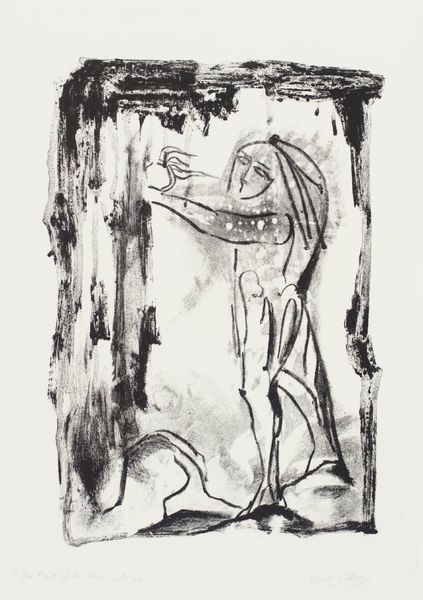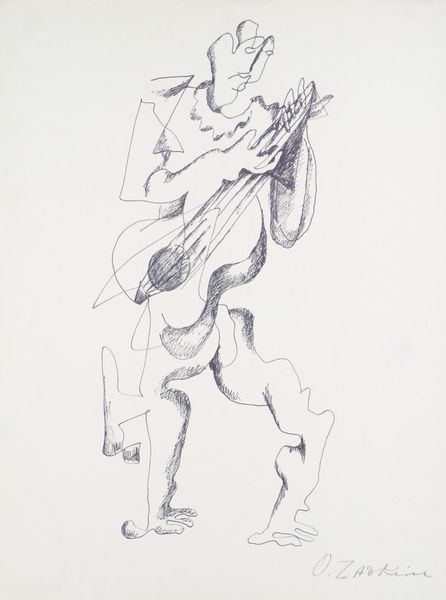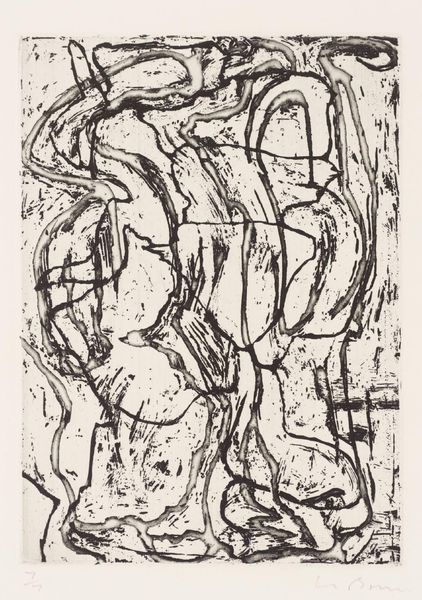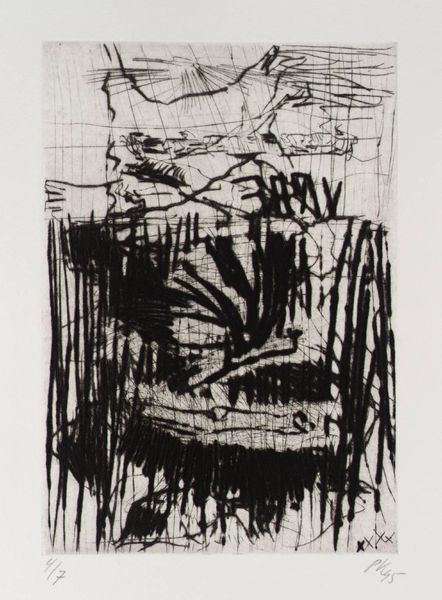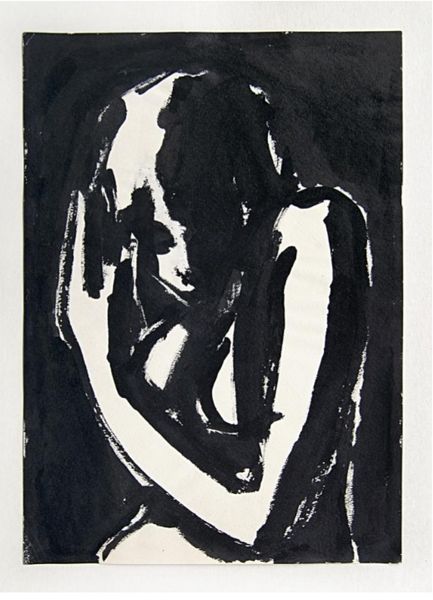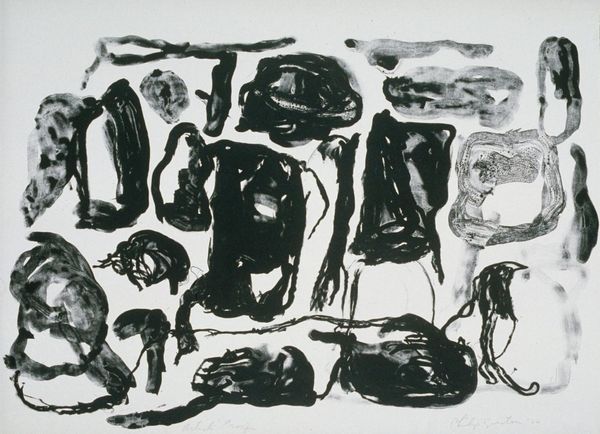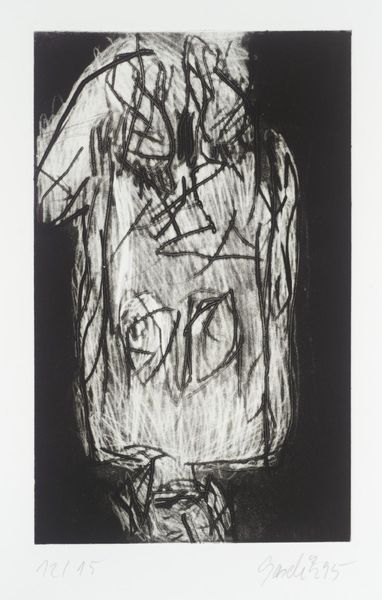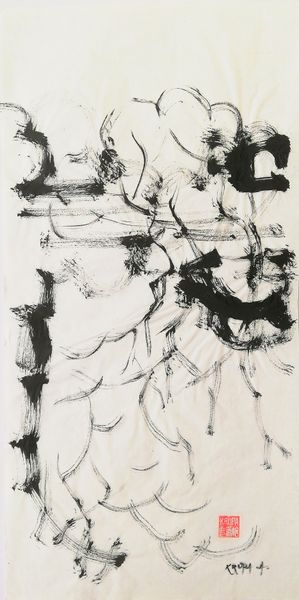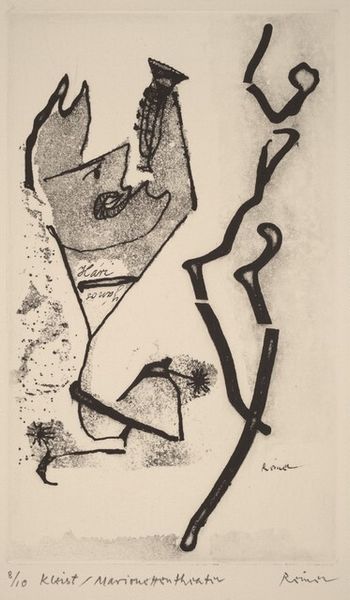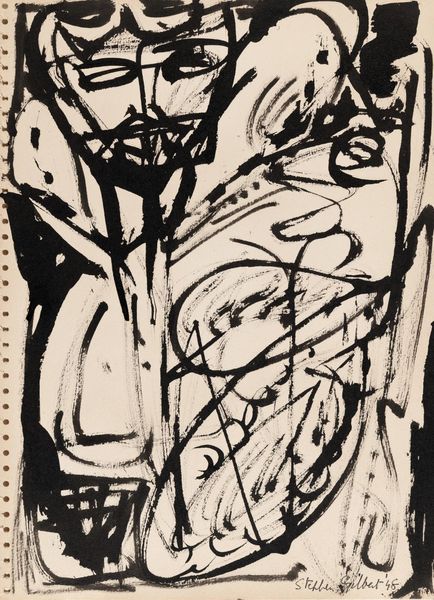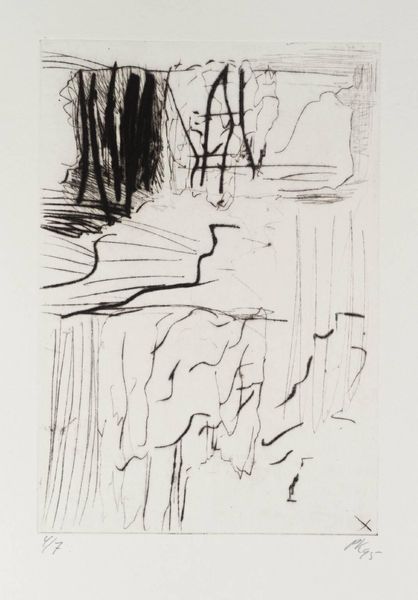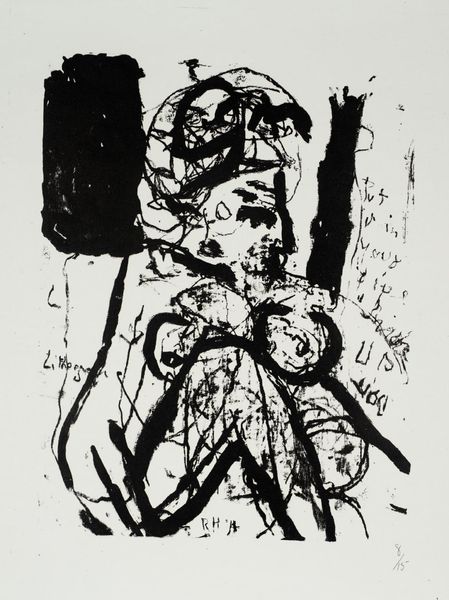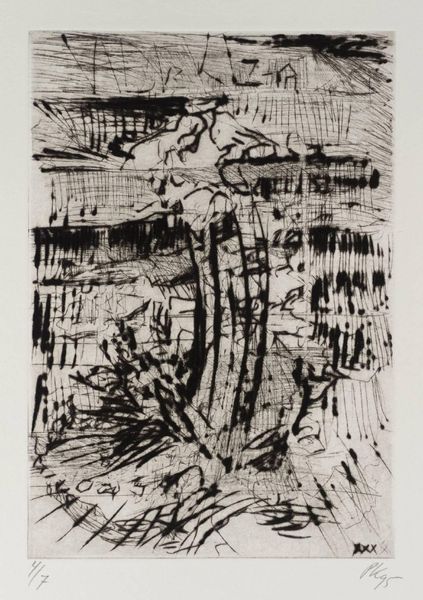
Dimensions: image: 405 x 305 mm
Copyright: © Tate | CC-BY-NC-ND 4.0 DEED, Photo: Tate
Curator: Cecil Collins' "Sybil," residing here at the Tate, presents a figure rendered in stark, bold strokes. It feels almost like a fragment. Editor: Indeed. The immediacy of the ink suggests a fleeting, almost ephemeral quality. A study in pure form, wouldn't you say? The figure barely coalesces. Curator: And yet, the title immediately invites broader cultural associations, hinting at classical mythology and the role of the prophetess in society. Consider how Collins uses these gestural marks to convey profound meaning. Editor: Precisely. It's the tension between the abstract and the figurative. He is probing the archetype with the least possible detail. The splash of ink near the lower left feels deliberate. A counterpoint? Curator: Perhaps. It could be a visual representation of the chaos inherent in prophecy itself. It’s a bold choice to leave it untitled. Editor: Yes, I believe we both came away with a deeper appreciation for the work, examining both its form and its historical implications.
Comments
No comments
Be the first to comment and join the conversation on the ultimate creative platform.
